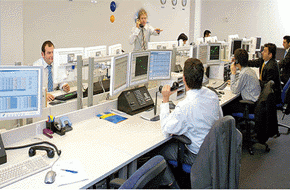
It has been an action-packed 24 hours, with lots of fresh information to digest. The net result is the market bringing forward Fed hike expectations to March, a stronger USD, much stronger equity markets and higher global bond yields.
There was much anticipation ahead of Trump’s first address to US Congress yesterday afternoon. There was hope that we’d see more policy detail, but in the end the speech was long on ambition and short on specifics. Importantly, Trump sounded Presidential, much like after his victory speech. Market reaction was not significant.
Well before Trump, mid-morning NZ time, a surprise interview with New York Fed President Dudley on CNN got the market’s attention. He said that the case for tightening had become “a lot more compelling in recent months” and that “…the risks to the outlook are now starting to tilt to the upside”. These remarks closely followed the Fed’s Williams, a non-voter but widely seen to be aligned with Chair Yellen, who said that a March rate hike would receive “serious consideration”. The comments helped boost the USD and significantly increased the probability of a rate hike later this month. It took the probability of a March rate hike based on Fed Fund futures above the 50% mark for the first time. Our calculations suggest that the probability is now around the 70% mark. If Fischer and Yellen talk from the same playbook on Saturday morning, then a March hike would become even more likely, and then only a major shock from the next US employment report would see expectations reverse course.
In data overnight, there was no smoking gun to help make the rate decision. The important core PCE deflator remained unchanged at 1.7% yoy. This indicator has been at 1.6-1.7% every month since the beginning of 2016. While the ISM manufacturing indicator was strong, the harder data on consumer spending and construction spending were softer than expected. The prospect of an earlier rate hike hasn’t perturbed the equity market, with the S&P index up 1.4% to a fresh record, led by Financials, Industrials, Energy and Materials. The market’s view is clearly that the positive economic outlook more than offsets any concern about a nudge up in rates from historically low levels.
Despite the plethora of news, some of which we haven’t even mentioned yet, currency movements have been fairly modest. The USD major currency TWI is up about 0.4% from the pre-Dudley level.
The NZD has underperformed despite higher risk appetite and trades at 0.7140 this morning, after bouncing off 0.7100 last night. This reflects a pullback from unexplained strength heading into month-end yesterday and possibly some nervousness ahead of a speech from Governor Wheeler at 9am this morning, which now all of a sudden will be on-the-record. The title is “Some thoughts on the balance of risks around the Reserve Bank’s monetary policy setting”. In our view, little has changed since the RBNZ’s February MPS, which espoused a neutral view of near-term policy, suggesting both upside to downside risks to the OCR. The market still views the world through a different lens, only seeing upside risk to the OCR from here, so the market is likely to read the speech as unnecessarily dovish.
An underperforming NZD and stronger Australian Q4 GDP data than expected has seen NZD/AUD test the important 0.93 support level. It has hovered around that level since last night.
Germany’s annual CPI inflation broke through the 2% mark for the first time in more than 4 years and was slightly ahead of market expectations. The ECB’s Weidmann said that “inflation this year is likely to be well in excess of the figure projected to date”. This combo helped support EUR, rising from a low of around 1.0520 to 1.0565. NZD/EUR is down to around 0.6760. In other news, French Republican candidate Fillon has been called in to speak to judges over claims of mis-using public funds to pay his wife, but he reaffirmed his intention to run for the Presidency.
UK PMI data were softer than expected and this has done no favours to GBP, which broke below 1.23 and currently sits just above that level.
US Treasury yields have trended higher since Dudley’s interview. The 10-year rate moved up from 2.36% and currently sits at 2.45%, about 4bps higher from the level prevailing at the NZ close. Higher US rates and higher German inflation data have driven 10-year Bunds up 8bps to 0.28%.
The influence of higher US rates through the local trading session drove NZ rates higher and the curve steeper. The 2-year swap rate rose by 1bp to 2.35%, around the mid-point of a tight 2.30-2.40% range that looks likely to hold for a while yet. The 10-year swap rate rose by 4.5bps to 3.51%. Further curve steepening could well be in play today, with higher global rates pushing the long end of the curve up, with Governor Wheeler’s speech today anchoring the 2-year rate.
Get our daily currency email by signing up here:
Daily exchange rates
Select chart tabs
BNZ Markets research is available here.


We welcome your comments below. If you are not already registered, please register to comment.
Remember we welcome robust, respectful and insightful debate. We don't welcome abusive or defamatory comments and will de-register those repeatedly making such comments. Our current comment policy is here.